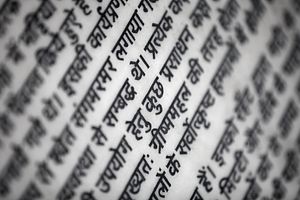The Bengali language movement of 1952 laid the foundations for the future division of Pakistan and the creation of Bangladesh. The movement, which was a protest against the imposition of Urdu by the Pakistani government on a predominantly Bengali speaking region, ignited raw passions among a population already dissatisfied with their country’s political leadership, which was dominated by West Pakistanis.
This blatant disregard for linguistic diversity set in motion a chain of events from whose impact Pakistan was not able to recover. The division of Pakistan in 1971 was the culmination of the conflict between its two halves that started with the Bengali language movement. The imposition of a single language in a linguistically diverse country proved to be its undoing and led to much suffering.
Contrary to Pakistan, India’s language policy was built on the principle of “unity in diversity.” India has adopted this policy because it has learned from the lessons of the past. Past attempts by India to impose linguistic uniformity had stirred regional passions and destabilized several states. In the 1960s, when New Delhi tried to impose Hindi as the sole official language of the Indian union, non-Hindi speaking areas vehemently opposed this. Anti-Hindi sentiment was particularly strong in the Southern state of Tamil Nadu, where Tamil is spoken. Protests against the imposition of Hindi lead to the loss of over 50 lives in Tamil Nadu, as a result of the Indian government’s attempt to mandate that all communication between state governments and the central government be in Hindi. The situation was diffused when the Indian government relented and allowed the indefinite use of English as well as Hindi as official languages of the central government.
Any attempt to homogenize India’s linguistic diversity has met with strong resistance throughout the country. India is facing a similar threat today as the result of Prime Minister Narendra Modi’s government’s instructions to promote Hindi on social media. Modi’s government issued a circular to this effect soon after coming to power last month. Politicians in Tamil Nadu reacted very strongly against this policy. A prominent Tamil politician warned the government that it should not do anything that would awaken a sleeping tiger.
Linguistic politics have always been a sleeping tiger for India and any move towards the sole implementation of one language has always been met with protests. Hindi and its variants are spoken by 45 percent of the Indian population, according to the 2001 census. It is widely spoken and understood across North India, where it serves as a lingua franca. Most of India’s Prime Ministers and leaders have come from Hindi speaking regions and it is understandable that they have been advancing Hindi.
However, there is some evidence to suggest that language is no longer the big issue it used to be. After decades of resistance against Hindi, even Hindi speakers realized the futility of this linguistic chauvinism and understood the importance of English as the language of opportunity in a globalized world. Conversely, some of the South Indian aversion towards Hindi has lessened. The opening up of the Indian economy two decades ago created many new job opportunities and career options which led to the movement of people all over India, and many people from North India have moved to South India. This has habituated inhabitants of states such as Tamil Nadu and Karnataka to the Hindi language and Hindi speakers. It was rare a decade ago to find Hindi speakers in Tamil cities such as Chennai, but today it is fairly common. The national popularity of Bollywood, India’s Hindi film industry, has also made Hindi more acceptable to younger non-Hindi speakers. As a result, resistance to Hindi is much less than it was before.
It is therefore baffling as to why the new government in New Delhi is so particular about promoting a language which has been gaining popularity naturally. Explicitly promoting Hindi to the exclusion of other languages has the potential to open up old wounds among non-Hindi speakers. Perhaps this is related to the ruling Bhartiya Janata Party (BJP)’s tendency to want to create a more uniform state.
In the 1950s, Pakistan believed that promoting a single language, chosen by the dominant group, would create a strong, unified republic. It believed that diversity is a weakness and not a strength of a pluralistic society. Unfortunately, this idea led to the breakup of Pakistan. On the other hand, India promoted and preserved pluralism and multiculturism and flourished. If India forgets this, it may have negative consequences for the country.
































